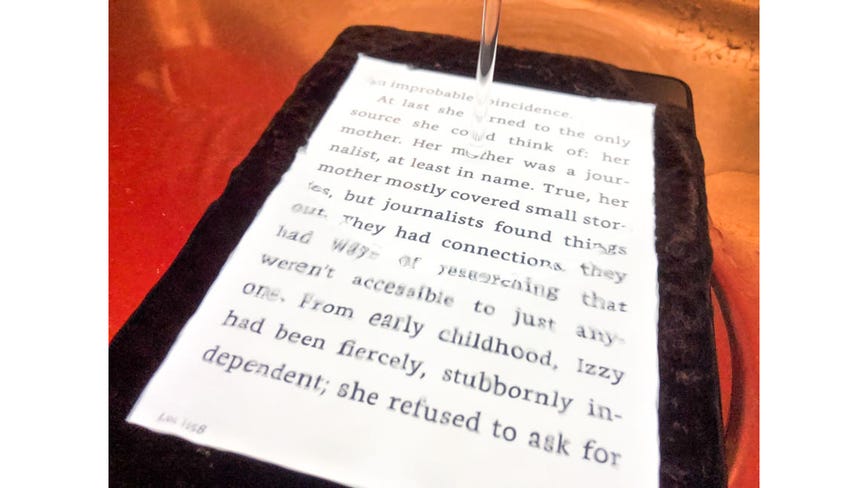
There are some other changes, too. Most notably, the Paperwhite is now fully waterproof like the high-end Kindle Oasis and has a plastic screen that Amazon says is shatter- and scratch-resistant. This makes it more durable and able to survive small drops, but fear not: Amazon will still be happy to sell you a case to protect it. They start at $30, but we've had good experience with the $12 Omoton model.
After playing around with new Paperwhite, I can say that overall performance seems to live up to Paperwhites past. It has the same sharp, 6-inch, 300-ppi touchscreen E Ink display that's readable in direct sunlight. It also has the same battery life: You'll get around six weeks of reading on a single charge with "normal" use. Note that Amazon no longer includes a power adapter -- just a cable -- but since it works with any USB phone charger, and you only need to juice it up every few weeks, its omission here isn't a big deal.
When I received my Kindle Paperwhite review sample, a few of my fellow CNET editors clamored for a look. The Paperwhite has looked essentially the same since 2013, so because a couple of my coworkers had recently bought the 2015 model , they worried that the "all-new" version of Amazon's most popular E Ink e-reader might render their purchases obsolete.
The Bad A little more expensive than the previous model. The ad-free version costs $20 more.
Compare These
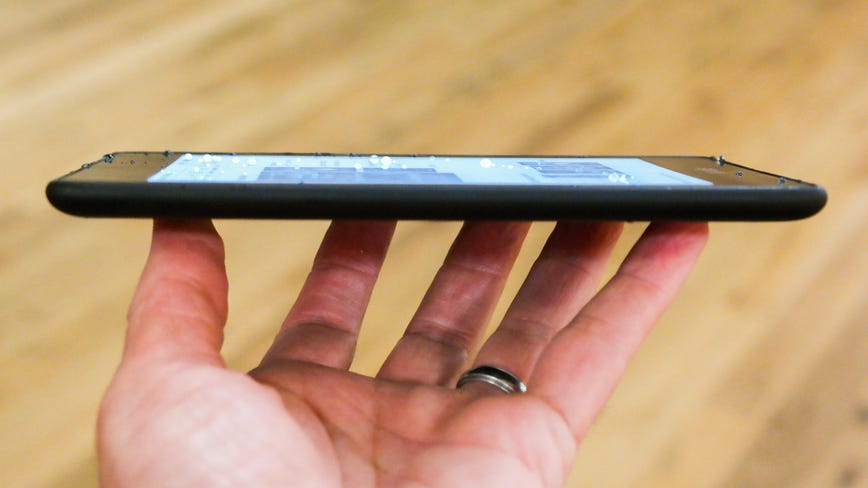
The Bottom Line The latest version of the Kindle Paperwhite White is more durable, fully dunkable and ultimately the best Kindle reader for most people -- especially if you snag it during one of Amazon's frequent sales.
Turns out, not so. While the new Paperwhite feels a smidge different from the old Paperwhite, it's not that different, at least on the outside. But it does have a few nice under-the-hood upgrades that make it a great gift or a worthy upgrade if you're a serious Kindle devotee.
Editors' note: Despite the fact that Amazon released a new standard Kindle and a new Kindle Oasis in 2019, the Kindle Paperwhite from the second half of 2018 is still our recommended e-reader. It got a new color option ("Twilight Blue") in 2019 and it regularly gets a price drop to $99 (from $129). That's why we've renewed its Editors' Choice award for 2019.
The new Paperwhite starts at $130 (£120 or AU$199). That's $10 more than the previous version, which got an improved display in 2015. But -- and it's important but -- the Paperwhite is periodically discounted to $100 on the US Amazon site, making it a far more attractive deal.
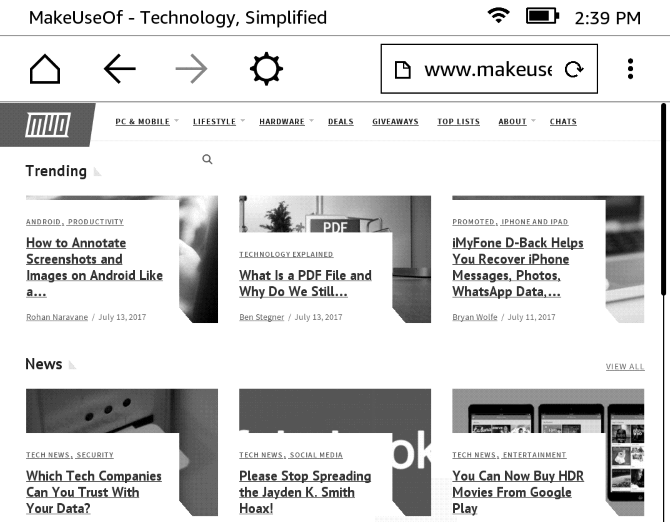
- Device Name: Change the default [Name’s] Kindle to something different if you like.
- Personal Info: Add some info to identify your device. You can add your email address or phone number here so it’s easier to return if lost.
- Social Networks: If you didn’t connect to Facebook, Twitter, or Goodreads earlier, you can do so here.
- Deregister Device: Use this to disconnect your Kindle from your Amazon account. Useful if you’re selling or upgrading your Kindle.
- Special Offers: Allows you to hide special offers that may be inappropriate for some audiences or hide personalized recommendations.
- Send-to-Kindle Email: Lets you view a special email address that you can email PDFs and other documents to. Anything this inbox receives will appear on your Paperwhite.
Your Kindle will automatically go to sleep if you don’t take any action for several minutes. When you’re done using it, though, you should put it to sleep manually. You can do this by tapping the Power button on the bottom of the unit. When you press it, the Special Offer screensaver appears and your backlight will turn off. If you have a magnetic case for your Paperwhite, closing the cover will activate sleep mode as well.
Also, reduce the brightness of your device as much as you can comfortably. In bright light, you probably won’t need the light at all.
Here, you can set up a Household. This lets you and another adult — plus up to four children — join up to form a family account. Using this feature, you can share books across your Kindles. You obviously must add another user to your account to use this.
Reading Options
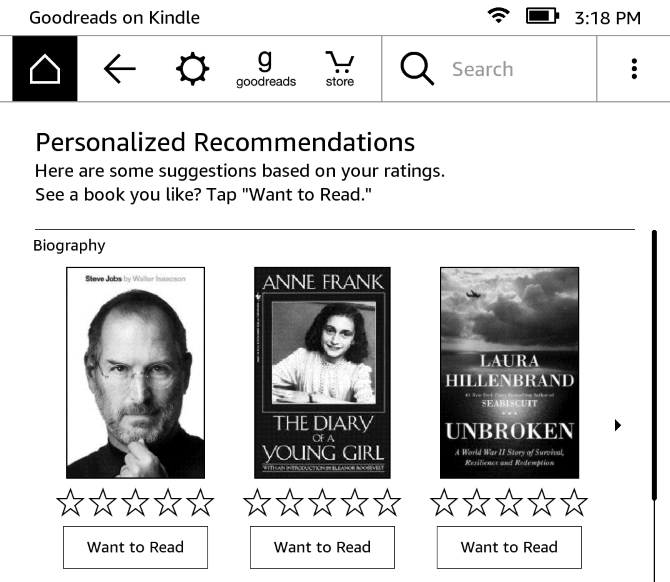
- Use Back to go back one step to where you just were. For instance, if you were on the Top Sellers page and tapped on a certain book, tapping Back will take you back to the Top Sellers page.
Once you’ve downloaded your book, return to the Home screen and you’ll find it on the left side. Tap My Library to view all your books if you don’t see it. Tap on your book and it will launch you into reading mode.
Head to Menu > Vocabulary Builder to access this neat tool. While reading, you can press and hold on any word to look up its definition. Any time you do that, your Kindle adds the word to this list for later review. Here you can tap words to review their definitions or work with some flash cards to finally master them.

These screens have some huge advantages: They use very little power, and they’re extremely readable in bright light. But they’re relatively low resolution and can only display black, white, and shades of gray, so they’re inappropriate for much more than text on a page. If you’ve ever tried to read a book while sitting in the sun at the pool, you can see why this sort of display is a perfect match for this category.
In other words, this generation of Paperwhite remains the best balance of features and price in the Kindle line. In my opinion, the Paperwhite has been the real Kindle for a few years now, and that remains the case. The base-model Kindle is getting better, but the better display, waterproofing, flush-front design, and nicer overall feel push the Kindle Paperwhite ahead.
You can see the decreased contrast and resolution in the Kindle (top) when compared to the Paperwhite (bottom).
A lot of people think the entire dedicated ebook reader category has been made obsolete by tablets and smartphones. Not so! If you’ve never used an ebook reader before, you may not realize that their screens are dramatically different from computer, phone, and tablet screens. These are reflective screens—like ink on paper, you read them by light reflected off their surface, rather than light shining in from behind like those other screens.
Why Kindle?
The biggest improvement to this generation of Paperwhite is IPX8 waterproofing, so you can read in the bath or by the pool without worry. The last time I went to a beach resort I saw a zillion Kindles poolside, so it makes me think that adding waterproofing will be very popular.
For the Kindle Paperwhite and Oasis, Amazon also offers two storage-size tiers—8GB or, for $30 more, 32GB. Unless you are leaving the internet for years or have decided to use the Kindle as a repository for audiobooks as well as text, you don’t need the larger size. Ebooks just don’t take up much space. You can fit hundreds of books on an 8GB Kindle.
Amazon’s pricing model for the Kindle is complicated. The base prices of each Kindle model include “special offers”, which is Amazon’s euphemism for advertising. With special offers enabled, the screensaver on your Kindle when it’s turned off is an ad for a book, and to turn the Kindle on you’ve got to press the power button and then swipe the touchscreen to dismiss the ad. There are also small ad banners at the bottom of the main navigation screen.

Are you saying there is a built-in app for documents on Kindle Fire? That sounds fantastic! Yes, you can read all sorts of files on it (doc, docx, html, rtf, pdf), transfer documents from your PC to your Kindle, or even receive them via email. So, what’s the catch?
Creating and editing documents on Kindle Fire is not easy. Available options are limited and they often come at a price. The tablet is created primarily for consuming content – reading, watching movies and TV shows, and listening to music. However, you can install any of the reviewed apps and expand your Kindle Fire’s abilities.
Overall, this program has a sleek interface and it is worth buying. It is available on Amazon’s website.
Instead, you can use the Docs library that comes with the device, or you can use some third-party apps available on Amazon’s website. Finally, there are some amazing cloud-based tools, such as Google Drive, Microsoft Office 365, etc.
The Problem with Docs Library

You can use this program to create, edit, and even share office files on your Kindle Fire. You can also connect it to a cloud drive such as Google Drive or OneDrive if you need more space or if your device is unreliable. The app has language support for over 50 languages.
Unfortunately, the most reliable way of creating documents on the Kindle Fire is using third-party apps. There are so many of them, but not all of them are equally great.
However, there are some alternatives that will help you create documents on your Kindle Fire, coming right up.
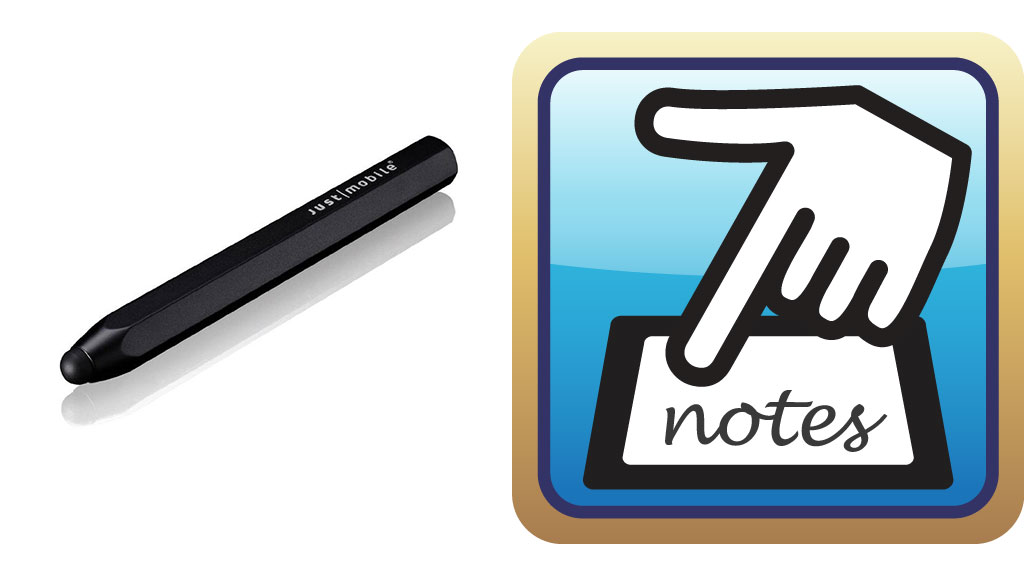
Back in the days of Pocket PC and Palm devices, I used a pocket sized solution for this kind of note taking. Palm Graffiti was an awesome input solution years ago and more recently made a comeback on Android. Back in July I was on a quest to find a workable handwriting solution for handwriting on my Nook Color tablet. The solution I arrived at was to use an app called Handrite Note, which is also available for the Kindle Fire. At that time, the Kindle Fire wasn’t out yet.
The best handwriting app for Android tablets is definitely Smart Writing Tool 7notes Premium. The app handles my scribbles like a champ, automatically converting them to text. Just like keyboard input, the app suggests words based on your input, which makes for a quick writing experience. I find that using either my finger or a stylus with 7notes Premium is faster than trying to type on the Kindle Fire keyboard. It’s fairly easy to correct any mistakes you make by simply deleting the last thing you entered. I like that my handwriting is converted to text because it’s easier to reuse what I’ve written, without having to type based on my notes. Anything created in 7notes Premium is easily saved to Evernote, which means I get the convenience of handwriting coupled with the fully reusable text that’s searched without needing OCR. I paid $9.99 and am happy with the results, but as I write this, the app is currently I got my Kindle Fire in the mail within days of the initial shipping. At the time, I didn’t even bother to try it with a stylus because I assumed they would be awful. I was sticking with using my finger to scribble notes with Handrite Note Pro, which is faster than typing but less than perfect..99. Not sure how long that will last.
Sometimes I wake up in the night and have an idea I want to jot down. Paper and pen aren’t a great solution for this because I have to turn on a light. More importantly, handwriting notes on a paper tablet keeps them trapped on paper unless I photograph or scan the page and import it into Evernote.
If all you want to do is save handwritten notes you can refer to later, Handrite Note Pro is still my favorite option. It allows you to write text in a larger size and then shrinks your writing to fit the screen as if you were writing on a continuous line on paper. The graph paper or lined paper backgrounds both make my writing highly legible, which translates to effective OCR. You can see how I use Handrite Note in combination with Evernote in the video embedded below, but I have a new favorite handwriting app.
The Problem with Keyboards on a 7-inch Tablet
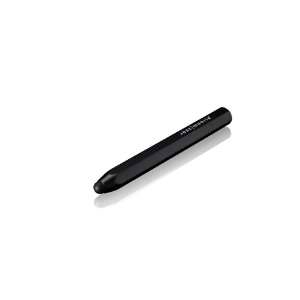
Holding the Kindle Fire in one hand while using my finger or a stylus is considerably faster.
I type fairly quickly on both Android phone and iPhone keyboards. I once timed myself at about 35 words per minute, which is slow on a computer keyboard, but it feels about as fast as I can go on a handheld device. On the Kindle Fire, I can’t get anywhere close to that speed. The size of the Kindle Fire makes it too small for onscreen touch-typing like I’ve seen many iPad users attempt and too big to comfortably hold between two hands and rapidly tap letters.
The four I tested were from Targus, Just-Mobile, BoxWave, and Kensington. The Targus, and BoxWave models look like they could be the same stylus with a different label on it. The Kensington stylus also has a pen on one end, which might make it more useful in some instances, though I’m trying to avoid needing paper. The Just-Mobile is my personal favorite, because it’s like a fatter version of a golf pencil, which makes it fairly comfortable to hold.
